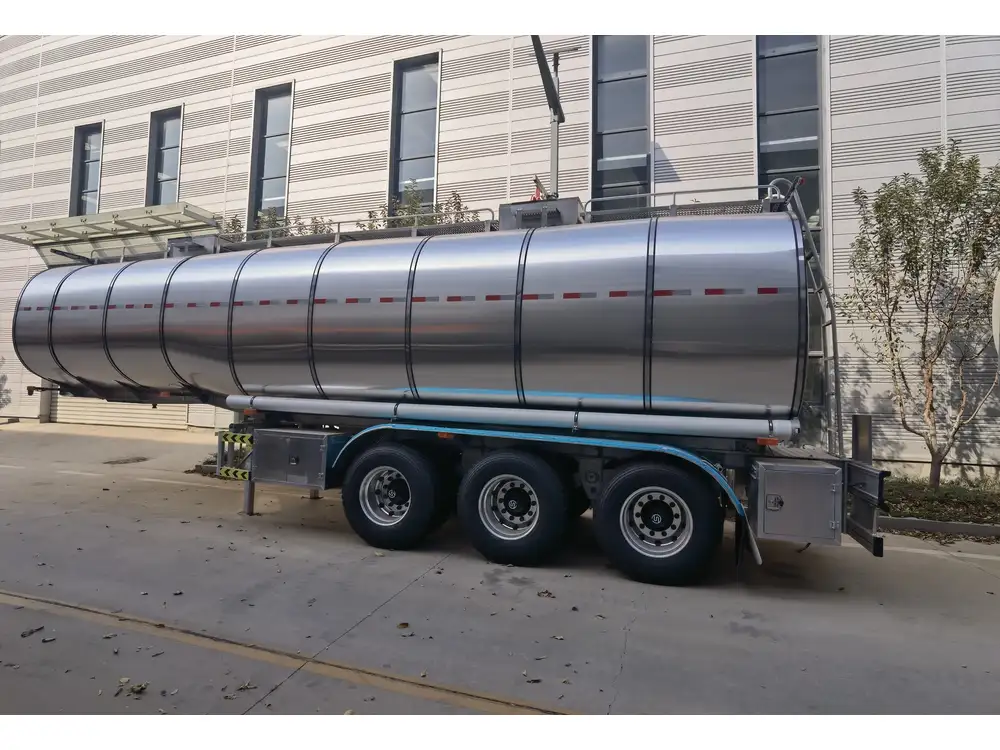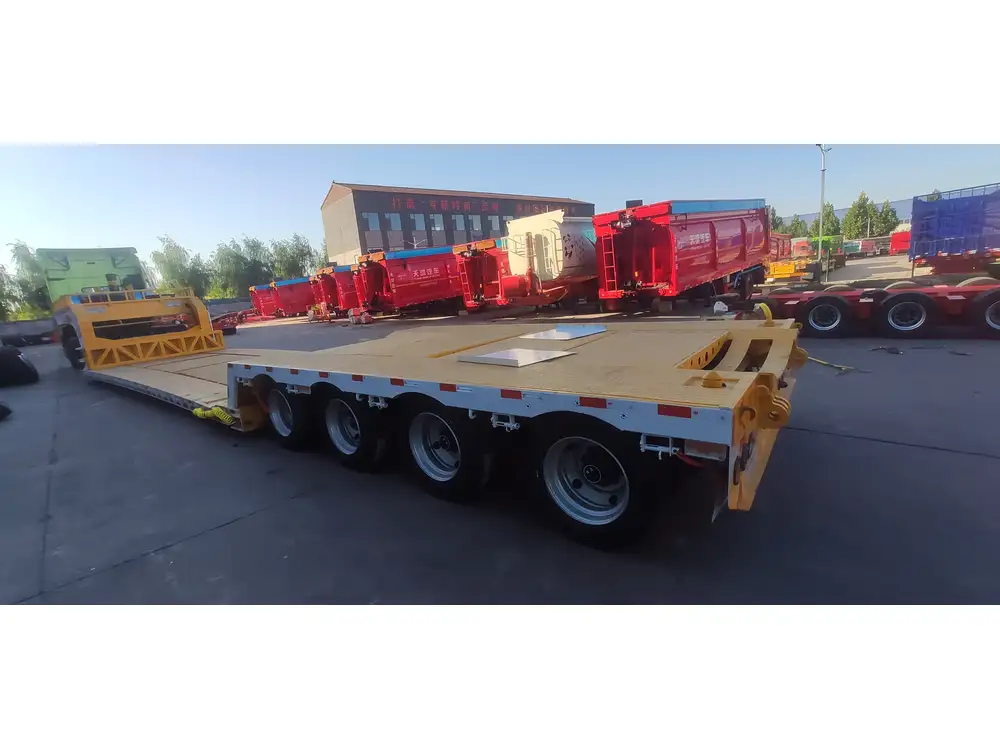When considering the transportation of goods, understanding the dimensions of the semi-trailer is crucial for logistics planning, cargo selection, and ensuring compliance with regulations. One of the most frequently queried specifications is, “What is the inside width of a semi-trailer?” Dive into the heart of this topic as we dissect everything you need to know about the internal dimensions, their importance, and how they impact your shipping operations.
The Standard Inside Width of Semi-Trailers
Common Dimensions
The inside width of a semi-trailer typically varies depending on its type and purpose. Most standard models have typical dimensions that encapsulate the most common use cases. Generally, the internal width of semi-trailers can be broken down into categories:
| Trailer Type | Inside Width (inches) | Typical Use |
|---|---|---|
| Standard Van Trailer | 96 inches | General cargo transportation |
| Extended Width Trailer (Wider Load) | 102 inches | Specialized cargo requirements |
| Reefer (Refrigerated) Trailer | 96 inches | Temperature-sensitive goods |
The standard width for a semi-trailer, particularly the most common style known as the dry van, is approximately 96 inches (8 feet). This measurement offers a practical space for a wide variety of freight, enabling flexibility in the types of goods that can be transported.

Variability in Dimensions
While the standard width is an industry benchmark, certain specialized trailers can have different dimensions. Wider trailers, often referred to as “wide-load” trailers, may extend to 102 inches (8.5 feet) to accommodate larger or more detailed freight loads. It’s essential to ensure that your cargo fits within these specifications, as exceeding these dimensions can lead to compliance issues with state or federal regulations.
Importance of Inside Width in Logistics
Cargo Accommodation
Understanding the inside width is not merely for meeting regulations; it is also critical for ensuring that the cargo fits appropriately within the trailer. An improperly sized load can result in damaged shipments, inefficiencies in loading and unloading, and increased operational costs. Specific considerations include:
- Load Distribution: Equal distribution of weight across the width prevents tipping and enhances vehicle stability.
- Height Clearance: Each semi-trailer’s height must also work concurrently with its width to ensure that cargo does not exceed overall load limits, facilitating better handling during transit.

Compliance and Regulations
Different regions may have varying laws governing the maximum permitted widths for vehicles, especially when loaded. Being cognizant of these regulations is vital for logistics professionals to avoid hefty fines and disruptions. For instance, the Federal Motor Carrier Safety Administration (FMCSA) in the U.S. mandates:
- Maximum width of 102 inches for most vehicles that can be operated without special permits.
- Variances based on local laws for certain oversized loads.
Before embarking on your logistics planning, consult with regulatory resources or local authorities to ensure compliance.
Specialized Semi-Trailers for Unique Needs
Reefer Trailers
Reefer trailers, designed for transporting temperature-sensitive products like perishables, typically maintain the standard internal width of 96 inches. However, their unique cooling systems and insulation requirements may influence effective loading and unloading strategies. The inside dimensions must be considered when dealing with pallets, bins, or any machinery to ensure air circulation and consistent temperature maintenance.

Flatbed Trailers
Flatbed semi-trailers deviate from the enclosed design of van trailers, where the cargo is exposed to the elements. They have variable widths that generally match the standards of 96 inches but can accommodate wider loads if configured correctly. The flexibility of this design allows for transporting oversized equipment or pallets with less restriction.
Tank Trailers
Tank trailers, used for liquid transportation, also maintain a consistent inside width near 96 inches, but their cylindrical shapes present unique challenges in terms of load stability and distribution. The liquid cargo’s nature requires rigorous attention to how it shifts during transit, emphasizing the importance of understanding interior dimensions for secure transport.
Calculating Available Space
When assessing semi-trailer width, it’s crucial to also evaluate the available internal length and height. The effective use of space can greatly impact what can be loaded and how it should be arranged. For example, an average semi-trailer might have dimensions like this:
| Dimension | Measurement |
|---|---|
| Internal Length | 53 feet |
| Internal Width | 96 inches |
| Internal Height | 13.5 feet |
These dimensions can influence whether cargo can be stacked, how it can safely be secured, and ultimately, if the shipment remains stable throughout the journey.

Factors Influencing the Choice of Trailer Width
Nature of Cargo
Not all products can be fixed into standard-width trailers. Considerations include:
- Fragility: Sensitive items may require more protective padding or specialized containment.
- Volume: Bulky items may need additional lateral space, encouraging the use of wider trailers.
Shipment Frequency
If you regularly transport specific goods, investing in specialized trailers might prove beneficial. For industries like construction, agriculture, or food service, understanding the types of loads regularly shipped can direct the selection of an optimal semi-trailer.

Route Considerations
Before determining trailer dimensions, logistics planners must consider route restrictions. Some roads may not accommodate wider loads or necessitate additional permits to transport oversized vehicles. Evaluating your shipping lanes is essential for ensuring a smooth transit process without legal entanglements.
The Role of Technology in Trailer Specifications
Load Calculators and Simulation Tools
With advancements in logistics technology, various online tools and calculators make it easier to determine optimal load configurations based on truck or trailer dimensions. These tools can simulate cargo arrangements, analyze weight distribution, and assist in planning the most effective route.

Fleet Management Software
Fleet management solutions can track trailer dimensions, monitor usage patterns, and ensure compliance with state regulations. Knowing the inside dimensions of the semi-trailer can aid in inventory management, loading efficiency, and overall logistic organization.
Frequently Asked Questions (FAQs)
Q1: What is the maximum load width for a semi-trailer?
A: In the United States, the legal limit for most semi-trailer widths is 102 inches without requiring special permits.

Q2: How do I choose the right trailer for my cargo?
A: Consider both the nature of your cargo and the dimensions of your product. Evaluate if it requires a standard van, flatbed, or reefer trailer.
Q3: Do regulations vary by state?
A: Yes, each state may have unique regulations surrounding vehicle dimensions, especially concerning oversized loads.
Q4: Can I modify a semi-trailer’s interior dimensions?
A: Modifying a semi-trailer’s internal configuration can be complex. It’s critical to consult with the manufacturer or a qualified engineer to ensure compliance with legal standards.

Conclusion
When faced with logistical challenges, understanding the inside width of a semi-trailer is paramount. The blend of industry standards, regulatory compliance, product considerations, and the integration of advanced technology culminates in optimal freight management. Making informed decisions can enhance operational efficiency, reduce costs, and ensure the safe passage of goods from suppliers to consumers.
Whether you’re managing a fleet or just beginning to explore shipping routes, mastering the minute details of trailer specifications sets the foundation for your long-term success in transportation and logistics.



